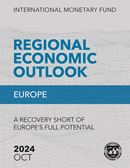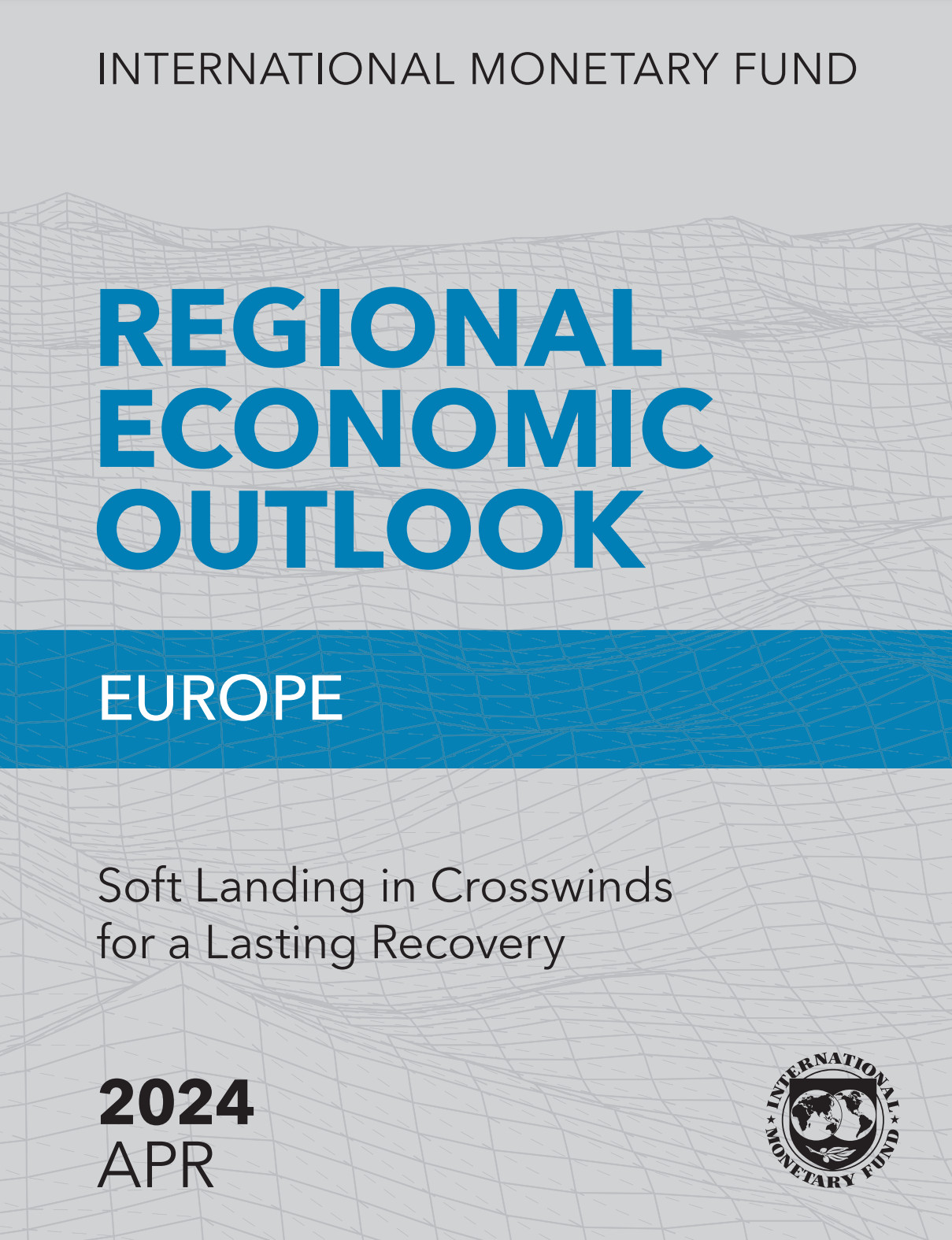Europe
2024
October 24, 2024
Regional Economic Outlook for Europe, October 2024: A Recovery Short of Europe’s Full Potential
Description:
Europe’s economy is recovering, benefiting from a strong crises’ response. Yet, the recovery is falling short of its full potential. Uncertainty about persistent core inflation, policy directions, and geopolitical conflicts, is dampening the near-term outlook. In the longer term, perennially weak productivity growth—a result of limited scale and business dynamism–-amid new headwinds from fragmentation and climate change are holding back growth potential.
April 19, 2024
Regional Economic Outlook for Europe, April 2024 | Soft Landing in Crosswinds for a Lasting Recovery
Description:
A soft landing for Europe’s economies is within reach. Securing the baseline of growth with price stability will require careful monetary policy calibration. Faster fiscal consolidation would ensure buffers are adequate to tackle future shocks, while structural fiscal reforms would help address mounting long-term expenditure pressures. Beyond the near-term recovery, raising potential growth prospects calls for efforts at both the domestic and European levels. Measures should aim to raise labor force participation, prepare the workforce for looming structural shifts, set an enabling environment for private investment, and promote innovation on a level European playing field—especially when it comes to the green transition, including through a strong commitment to carbon pricing. Greater European integration would amplify the effect of these reforms. Formulating an ambitious set of growth-enhancing reforms should be a key priority of a new EU commission.
2023
November 8, 2023
Restoring Price Stability and Securing Strong and Green Growth
Description:
Restoring Price Stability and Securing Strong and Green Growth
Europe is at a turning point. After last year’s crippling energy price shock caused by Russia’s invasion of Ukraine, Europe faces the difficult task of restoring price stability now while securing strong and green growth in the medium term. Economic activity has started to cool and inflation to fall as a result of monetary policy action, phasing-out supply shocks, and falling energy prices. Sustained wage growth could, however, delay achieving price stability by 2025. Failing to tackle inflation now will risk additional growth damage in a world exposed to structural shocks from fragmentation and climate change. These global headwinds add to Europe’s long-standing productivity and convergence problems. To lift Europe’s potential for strong and green growth, countries need to remove obstacles to economic dynamism and upgrade infrastructure. This will strengthen business-friendly conditions and investment. Cooperation at the European level and with international partners will position Europe as a leader in the climate transition and support economic stability across the continent.
April 28, 2023
Regional Economic Outlook for Europe, April 2023
Description: Press Conference for the Economic outlook for Europe
2022
October 12, 2022
Regional Economic Outlook for Europe, October 2022
Description: The war in Ukraine is taking a growing toll on Europe’s economies. The worsening energy crisis has depressed households’ purchasing power and raised firms’ costs, only partly offset by new government support. Central banks in the region and the world are acting more forcefully to bring high and persistent inflation down to targets, and global financial conditions have tightened. European policymakers are facing severe trade-offs and tough policy choices. A tightening macroeconomic policy stance is needed to bring down inflation, while helping vulnerable households and viable firms weather the energy crisis. But policies need to stay nimble and agile and adjust should additional shocks materialize.
April 20, 2022
Regional Economic Outlook for Europe, April 2022
Description: The Russian invasion of Ukraine created a humanitarian catastrophe. In two months since the outbreak of the war, about 5 million people, mostly women and children, fled Ukraine, and a further 7 million are estimated to be displaced internally. In addition, thousands have been wounded or killed.
2021
October 20, 2021
Regional Economic Outlook for Europe, October 2021
Description:
Regional Economic Outlook for Europe, October 2021
April 12, 2021
Regional Economic Outlook for Europe | April 2021
Description: With new waves of COVID-19 infections hitting Europe, the recovery remains halting. However, vaccinations are progressing and thus Europe’s GDP growth is projected to rebound by 4.5 percent in 2021. The main priority is to quickly ramp up the production and administration of vaccines. At the same time, policymakers need to continue providing emergency support to households and firms. And they need to prepare measures to stimulate hiring and investment once the pandemic is under control. Such measures will foster a quicker and fuller recovery, by reducing scarring from unemployment, missed education and training, and low investment.
2020
October 21, 2020
Regional Economic Outlook for Europe, Fall 2020
Description: The COVID-19 pandemic has hit Europe particularly hard — we project that the economic contraction in 2020 will be among the world's largest. Countries in Europe responded swiftly to the pandemic, which helped avoid worse outcomes. A decisive policy response protected incomes and the productive capacity of the economy. Across Europe, governments deployed large fiscal packages to support households and firms, with job retention programs preserving at least 54 million jobs. But the outlook for 2020 remains bleak and the recovery will be partial and uneven. We project that economic activity in Europe this year will decline by 7% and rebound by 4.7% in 2021. The recovery path is exceptionally uncertain. The ongoing resurgence of infections across Europe presents perhaps the greatest downside risk at this stage. Learn more, download our new Regional Economic Outlook for Europe.
2019
November 6, 2019





